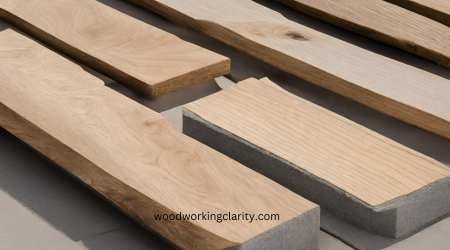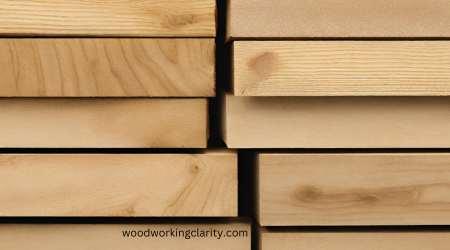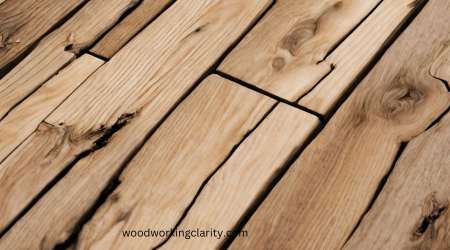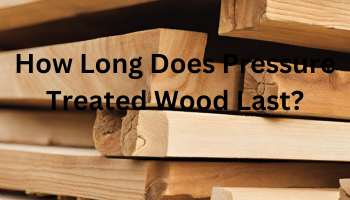For a long time, pressure-treated wood has been the go-to material for decks and fences in landscaping.
But, how long does pressure-treated wood last? Is there a lifespan of pressure-treated wood? The answer is yes! Many factors affect the longevity of your pressure-treated wood deck or fence, but if you take care of them well, they will last longer.
This article will answer how long pressure-treated wood lasts and explore some common problems with pressure-treated lumber. Plus, how to increase pressure-treated wood lifespan.
How Long Does Pressure Treated Wood Last?
Pressure-treated wood can last up to 40 years. This lifespan could be more or less depending on the type of wood, what the treated wood stakes are used for, how well it is kept, and the climatic conditions. With additional protection, pressure-treated wood can last well 70 years without any sign of decay.
How Long Will Pressure Treated Wood Last in Concrete?
The lifespan of pressure-treated wood in concrete can go up to 70 years or even an entire century. In addition, concrete provides water and moisture-free environment: ideal for pressure-treated poles.
Therefore, you can use this wood type on the wood foundations since it guarantees the most protection.

How Long Does Painted Pressure Treated Wood Last?
Painted pressure-treated wood can last anywhere between two and seven years. This lifespan is because the recommended primer and paint to use are latex primer and water-based latex paint.
However, constant exposure to the weather changes will wear out the paint in just a few years.
How Long Will Pressure Treated Wood Last in Water?
A pressure-treated wood usually guarantees a longer lifespan than untreated wood. It can serve you well for about 30 years when in direct contact with water, provided there’re no entry points into the wood’s grain.
You can prolong this lifespan with proper care by applying a waterproof sealant before using it.
How Long Does Pressure Treated Wood Last Outside?
The lifespan of the pressure-treated wood exposed outside is 40 years. This is the standard lifespan for treated wood.
First, however, you need to ascertain there’re no cracks or any entry point for water or moisture to seep into the wood: otherwise, it will rot away.
Further reading: Does pressure treated wood rot?
How Long Does Pressure-Treated Wood Last in Dirt?
Forest Products Laboratory and other research groups have confirmed with certainty that pressure-treated wood in dirt can last up to 40 years without rotting.
This is because chemicals used in treating wood keep the wood free from attacks by termites, carpenter ants, and even decay from fungi.
What is Pressure-Treated Lumber?

Pressure-treated (PT) lumber is a unique wood chemically treated to repel against fungus growth and infestation by insects.
The wood is placed in a depressurized holding tank that uses a high-pressure vacuum to draw out the moisture in the wood grains and then replace it with chemical preservatives.
These preservatives used are responsible for pressure-treated wood’s longevity: making the wood rot and termite-free.
Some of the popular chemical wood preservatives are; Alkaline Copper Quart (ACQ), Ammoniacal Copper Zinc Arsenate (ACZA), Chromated Copper Arsenate (CCA), Borates, and Copper Azole. These chemicals treat a variety of wood, including the difficult ones like Douglas fir.
There’s an oil-type chemical preservative used in pressure treatments. This treatment results in oily wood surfaces, often have an unpleasant odor and is best used for utility poles, pilings, and other uses with minimal human contact.
Find out: How can you tell if wood is pressure treated
The Types of Pressure-Treated Lumber
There’re three main types of pressure-treated lumber: ground-contact, above-ground, and heavy-duty lumber. These three categories of pressure-treated lumber are distinguished by where and how they are used.
What’s common between them is the preparation process for either staining or painting.
Ground-contact lumber
This treated lumber is specially treated with more chemical preservatives than treated wood types meant for use above the ground. This particular pressure treatment makes it suitable for use as a fence post or any other application that requires part of the wood to be buried in the ground.
Above-ground lumber
On the other hand, this treated wood is made for applications where the wood stays at least six inches above the ground. This wood type is most suitable for use as deck boards or deck rails.
In addition, they are easy to maintain and replace whenever you please.
When using above-ground wood, make sure to space them to allow for water to drain out and adequate air circulation. That way, the wood doesn’t retain moisture which would accelerate rot.
Heavy-duty lumber
This is a resistant type in the category of pressure-treated wood. For this reason, they are mainly used for docks, seawalls, and other marine applications.
What are The Grades of Pressure-Treated Wood?
You will find Pressure-treated wood sold in different lumber grades ranging from the lowest to the highest depending on its intended use. The highest grade lumbers usually have fewer knots or splits, are the strongest, and are pricier than the lower grade lumbers.
Pressure-treated wood is available in 12 grades, divided according to the Use Categories (UCs). The American Wood Protection Association has standardized these categories.
We find out the difference between pressure-treated wood suitable for above-ground and ground contact in these grade categories.
The following PT wood grades UC1, UC2, UC3A, and UC3B, are best used for above-ground structures. While UC4A, UC4B, UC4C are best used for structures in direct contact with the ground.
Additionally, UC5A UC5C is best for ground contact, especially if there’s constant exposure to salt or freshwater.
Finally, UCFA and UCFB are the pressure-treated wood you would use if you are looking for wood with fire-retardant features.
The higher the grade of the pressure-treated wood, the better it is at withstanding conditions that accelerate rotting. Use this guide or consult with an expert when purchasing pressure-treated wood for your DIY projects.
Always keep in mind that using the wrong wood grade will shorten the lifespan of your structures.
When Should I Use Pressure-Treated Wood?
It’s advisable to use pressure-treated wood for applications where there’s direct contact between the wood and a source of moisture. This refers to wood posts buried underground or the ones in contact with vegetation, as well as those placed less than six inches above the ground.
In addition, consider using pressure-treated wood for applications that involve direct contact water, such as seawalls or freshwater docks, without forgetting any lumber in contact with concrete or masonry surfaces.
Best Pressure Treated Wood for Ground Contact

Pressure-treated wood for ground contact refers to wood foundations, lumber yards, deck railings or freshwater docks, stair stringers, and above-ground uses in tropical climates. Ground contact wood has higher chemical retention levels.
This cushions it from agents responsible for supplying moisture which causes wood rot and decay. Use this type of wood for underground structures and those placed less than six inches above the ground.
The best pressure-treated lumber for ground contact is any wood grade labeled UC4A or UC4B. These tags mean the wood is intended to be used underground. However, remember to prepare the wood and seal it before burying it underground: particularly if you cut or drill into the wood.
If you live in a wet or swampy region and fungi are a significant threat, you can use white Cedar. This wood type is naturally rot-resistant. However, for even better results, use a pressure-treated version with the UC4A or UC4B tag.
Whenever in doubt, choose Cypress wood. You can never go wrong with this one. It’s also naturally resistant to moisture which often accelerates rot: perfect for ground contact use.
See Also: How to seal cut ends of pressure treated wood
How Long Will Pressure Treated Wood Last in the Ground
The life expectancy of pressure treated wood in the ground is about 40 years before it begins to rot. Of course, soil pH, rainfall levels and other environmental conditions also determine the lifespan of treated wood.
As scientists learn more about wood-decay fungi, these estimates may change as well.
Regular lumber used underground can last about eight to 12 years only.
How to Maintain and Prolong the Lifespan of Pressure-Treated Wood
Proper maintenance practices of your pressure-treated wood structures can guarantee a prolonged lifespan. These maintenance practices help you protect the wood from naturally occurring problems.
For example, shrinkage and swelling, mildew growth, and ultraviolet damage. These maintenance practices are to protect pressure-treated wood underground, above the ground, and marine contact ones.
The Steps
Step 1
Begin by cleaning the wood with a mildewcide cleaner. This step is ideal if the treated wood structure is new, it will keep away mildew from growing on your wood.
Step 2
Apply a water-repellent sealer with an ultraviolet stabilizer. Choose the best clear deck sealer for pressure-treated wood that will keep water at bay and avoid the wood’s swelling or shrinkage.
In addition, an ultraviolet stabilizer slows down the discoloration process of the original wood color.
Step 3
Plan to carry out this maintenance practice yearly or every two years to guarantee the longevity of pressure treated deck.
Pro-Tip
Ensure the wood is completely dry from the previous cleaning before applying the sealer finish. You can check how long does pressure treated wood take to dry or test this by sprinkling a few drops of water on the wood.
If the drops get absorbed immediately, consider it a green light: if not, it’s best to wait another few days for the wood to dry.
Safety Tip
All pressure-treated wood contains a certain degree of toxic chemicals. Therefore, wear a dust mask and gloves when handling them.
Avoid using pressure treated lumber indoors or for cutting boards that will come into contact with food. Also, wash your hands after handling them.
What Causes Pressure-Treated Wood to Rot?
The leading cause of rot in pressure-treated wood is fungi. Even though pressure-treated wood contains chemical preservatives, rotting is a physical change caused by tiny organisms in the air and can affect both wet and dry wood.
That’s how we end up with two types of rot: wet and dry rot.
Wet rot
Pressure-treated wood can rot as a result of prolonged exposure to water and moisture. Prolonged moisture in the wood promotes the growth of fungi or fungal spores, which will then eat the wood, soften it and cause rotted wood.
Your pressure-treated wood can trap moisture if it’s in a poorly ventilated area. Unfortunately, this moist condition encourages the growth and multiplication of wood fungus. You can quickly identify wet rot by looking for damp, musty smells, dark grey dust deposits, and soft or spongy wood.
The best way to prevent the rot is by keeping the wood dry whenever possible. In addition, you can also paint, stain or apply a liquid preservative sealer to boost the longevity of pressure-treated wood.
Dry rot
A brown-rot fungus is responsible for decaying dry pressure-treated wood. The fungi will draw out the existing moisture in the wood: usually about 20 %. Dry rot then spreads out and damage large portions of the wood before it’s noticed.
The first noticeable sign of dry rot is the cuboidal cracking pattern that’s brittle and breakable by touch. Also, dry rot can be characterized by; red-rust, orange, or brown dust deposits on your wood.
Remember, if the damage is beyond repair, you’ll have to remove and replace the damaged wood. You can DIY it or contact a dry rot specialist to help remedy the situation.
But don’t worry, we have a solution. Read out article on how to protect wood from rotting to prevent it from deteriorating.
Alternatives to Pressure-Treated Wood
Pressure-treated wood is the most durable of wood types, and it’s also quite expensive. However, naturally rot-resistant wood and wood-plastic composite lumber are excellent alternatives for pressure-treated wood. Besides, they resist rot and are relatively affordable.
Examples of naturally rot-resistant wood species are Cedar, redwood, Cypress, Teak, Yew, Walnut, Oak, and Mahogany, among several others. These woods not only have a beautiful natural wood color and grain pattern, but they also have a pleasant aroma.
You can use these decay-resistant woods for building outdoor structures like decks and pergolas. You can also use them indoors since they aren’t as toxic as pressure-treated wood. Consider using them as bathroom subfloors.
Note, although these alternatives are great to use, they are not as durable as pressure-treated wood.
Is Redwood Better than Pressure-Treated Wood?
Redwood is naturally rot-resistant, and it’s often an excellent substitute for pressure-treated wood. Redwood is also eco-friendly.
It stores more carbon than it produces, while pressure-treated wood is quite harmful due to the chemicals used during the pressure-treatment process.
Also, redwood is known to naturally resist fire, while some treated wood can burst into flames.
In addition, it is easy to clean and maintain its original color: whether it is protected with sealant or not. On the other hand, pressure-treated lumber relies on a fresh coat of paint or stain to restore the weather-beaten structure.
More importantly, redwood can be used indoors and outdoors, while pressure-treated wood is only limited to being used outdoors.
FAQs
Does pressure-treated wood rot?
Yes. Although pressure-treated wood is superior to untreated wood, it can still rot if it’s not properly maintained or if you use the wrong grade for your project.
How do you keep pressure-treated wood from rotting?
Applying a deck preservative such as; semi-transparent stain, paint, or wood sealant is the best practice to prevent pressure-treated wood from rotting.
Does pressure-treated wood need to be sealed?
Yes. Pressure-treated wood needs to be sealed against water and moisture damage. If not, the pressure-treated wood fibers will absorb moisture and expand and contract, warp and even grow mildew. Read our article “Can pressure-treated wood get wet” to discover effective methods for protecting your pressure-treated wood.
Can you paint or stain pressure-treated wood?
Yes. However, for a pressure-treated wood to take in paint or stain, it must be completely dry.
Is it better to stain or paint pressure-treated wood?
The stain seeps into the wood and gives it waterproof features. On the other hand, paint can coat over any cracks on the surface. Anyway, experts recommend staining rather than painting pressure-treated wood.
Is it better to stain or seal a deck?
Sealing a deck enhances the natural wood color and grain pattern while also waterproofing the deck. On the other hand, staining a deck protects the wood from moisture, rot, and UV rays damage.
How long does a wood deck last?
A wood deck can last between eight and ten years. However, air circulation, ultraviolet rays, equilibrium moisture content affect the longevity of a deck, whether it is sealed or not.
What happens if you paint pressure-treated wood too soon?
If you paint or stain pressure-treated wood too soon, the paint will peel, flake and fall since it can’t adhere well to a wet surface. If you want results worth your time and money, wait until the wood dries completely or buy kiln-dried wood.
Find out how soon can you stain pressure treated wood.
Can I burn old pressure-treated lumber in my fire pit?
Avoid burning old pressure-treated lumber in your fire pit or fireplace because you risk inhaling toxic chemicals used in pressure treating. Instead, dispose of them in a landfill. We have a blog post dedicated to this topic. You can read it here – Is it safe to burn pressure-treated wood?
Why does pressure-treated wood last longer?
Pressure-treated wood is infused with preservative chemicals that are impossible to remove. These chemicals keep away fungi that would trigger wood rot, termites, and other insects that burrow into the wood. Generally, these preservatives are responsible for how long pressure-treated wood lasts.
How long will a pressure-treated 4×4 last in the ground?
The lifespan of a pressure-treated 4×4 lies at a minimum of 20 years if exposed to direct contact with soil and stable climatic conditions. However, that lifespan can increase to 40 or even 70 if the wood is encased in concrete or is sealed with a wood sealer.
Will vinegar stop wood rot?
Vinegar can act as one of the fungicides used to stop wood from rotting. Vinegar and other fungicides change the PH levels that a fungus thrives in: this, in turn, stops dry rot from forming on wood.
How long will an untreated deck last?
The life expectancy of an untreated wood deck outside is somewhere between eight and ten years. Regular maintenance practices on your deck will go a long way into increasing how long it lasts.
How long does ground contact wood last?
Regular wood used for ground contact can last about ten years. However, if the wood is pressure treated, it can last up to 40 years.
CCA-treated wood life expectancy
The lifespan of CCA-treated wood is 40 years, with a potential to last even longer. This life expectancy remains the same whether the wood is buried underground or in a marine environment.
Will Bleach Stop Wood Rot?
Bleach can help slow down or stop the spread of wood rot, but it is not a guaranteed solution. Find out more in our comprehensive guide “Can bleach stop wood rot?”
How Long does Treated Wood Last Summary?
In conclusion, pressure-treated lumber is generally stronger and has a longer lifespan than untreated wood or any other alternatives.
So, how long does pressure treated wood last? Its standard lifespan is 40 years. Yet, it has more potential to last even longer. This makes it your best choice for outdoor projects.
Remember, adding an extra layer of protection to your treated decks and other outdoor projects will increase its longevity. But, everything comes down to choosing and using the correct pressure-treated wood grade for your projects.
Good luck with your projects.


I have an Ipe deck with wheelchair ramp in Miami Fl a very humid environment. My ramp has pressure treated 2×6 joists that are in contact with dirt. Where the ramp meets the driveway the joist’s have little to no ventilation in an extremely moist area. The ramp is 5 years old and the joists are completely rotted at the bottom of the ramp. What type of wood do you suggest? Is a composite strong enough to screw Ipe decking to?
No type of wood. I always start my ramps with concrete to keep that from happening. I get the high end at least 2″ taller than the size joists I’m using.